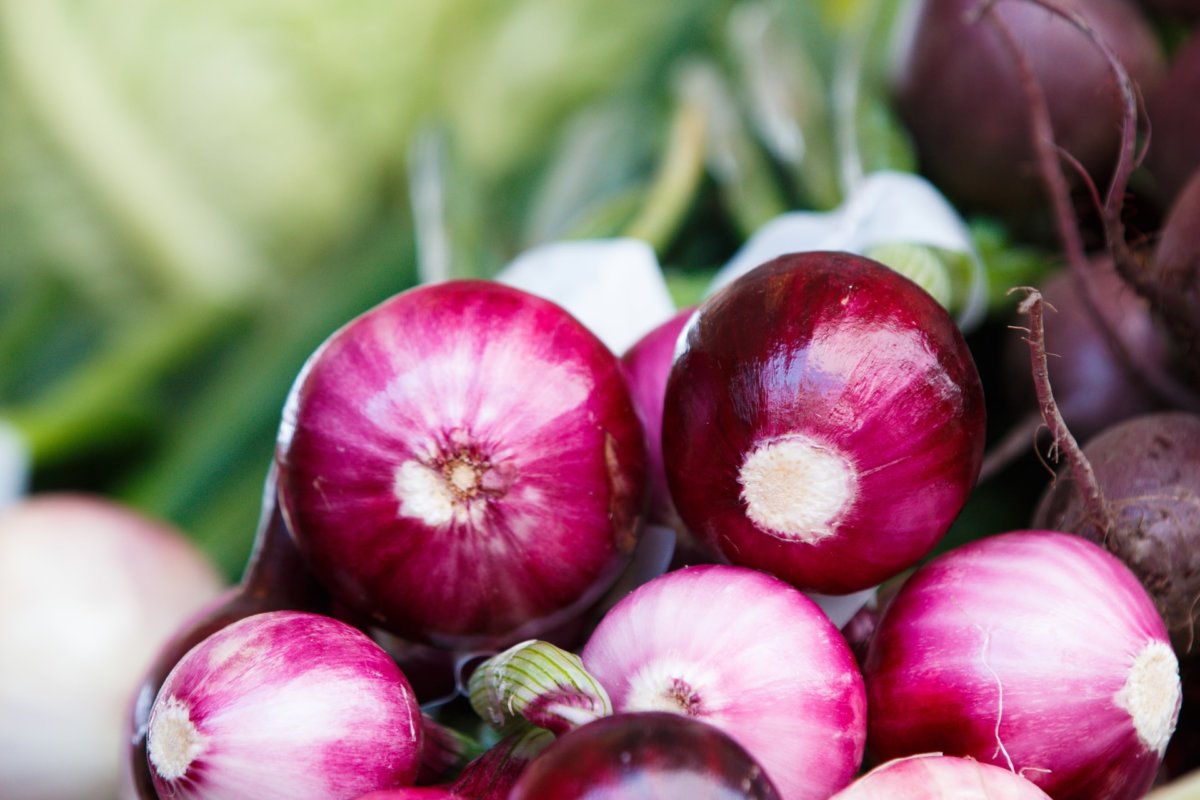
Credit: silvia trigo /Unsplash
Public Health Agency of Canada is asking Canadians to throw away or return red onions imported from the USA due to possible Salmonella contamination.
PHAC says as of June 30, there have been 114 Newport illnesses associated with red onions imported from the United States (U.S.), including 55 new infections since last Friday. This includes 43 cases in British Columbia, 55 in Alberta, 13 in Manitoba, two in Ontario and an individual in P.E.I. who reported falling ill after travelling to Alberta. Though Saskatchewan has not reported any confirmed illnesses related to this outbreak, provincial public health authorities are investigating some Salmonella Newport illnesses in the province.
PHAC says people are believed to have fallen ill between mid−June and mid−July. Of the 102 cases where information is available, 16 people have been hospitalized. No deaths have been reported.
PHAC is collaborating with the United States Centers for Disease Control and Prevention (U.S. CDC), and U.S. health officials to investigate an outbreak of Salmonella infections occurring in five provinces.
Public Health Agency of Canada is advising the public in British Columbia, Alberta, Saskatchewan, Manitoba, and Ontario to not eat any red onions imported to Canada from the U.S., including any food products that contain raw red onions imported from the U.S. including salads or any other food item containing red onions at a restaurant or food establishment.
PHAC is also asking restaurants and retailers to verify the source of their stock of red onions. Suppliers, distributors and others in the supply chain should also not ship or sell red onions imported from the U.S.
PHAC says Canadian−grown red onions are not affected by the advisory.
Food distributor Sysco has recalled 10− and 25−pound bags of Imperial Fresh jumbo red onions in those provinces.
Symptoms of a Salmonella infection, called salmonellosis, include: fever, chills, diarrhea, abdominal cramps, headache, nausea, vomiting and typically start 6 to 72 hours after exposure to Salmonella bacteria from an infected animal, person or contaminated product.
WHAT TO DO IF YOU HAVE RED ONIONS AT HOME:
- Look for a label showing where the red onion was grown. It may be printed on the package or on a sticker.
- If the packaging or sticker shows that it is from the U.S., don’t eat it. Throw it away and wash your hands.
- If it isn’t labeled, don’t eat it. Throw it away and wash your hands.
- If you don’t know whether the red onion found in a premade salad, sandwich, wrap or dip contains red onion from the U.S., don’t eat it. Throw it away and wash your hands.
- Wash and sanitize drawers or shelves in areas (such as fridges and cupboards) where red onions were stored.
HOW TO BUY RED ONIONS AT A STORE:
- Look for a label showing where the red onion was grown. It may be printed on the package or on a sticker.
- If the packaging shows that it is from the U.S., don’t buy it.
- If it is an unpackaged product, or is not labelled, ask the retailer whether the red onion comes from the U.S.
- If you can’t confirm that the red onion in stores is not from the U.S., don’t buy it.